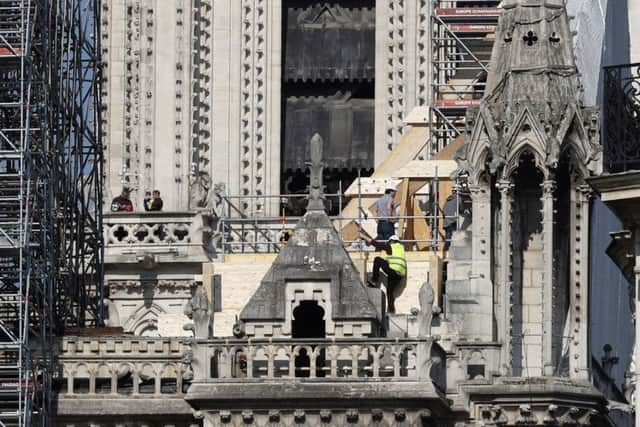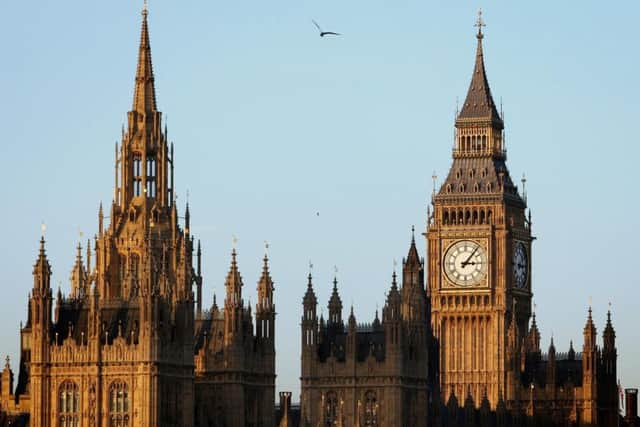Matthew Flinders: Notre Dame fire turns up the heat for renewal of crumbling Westminster


If my initial thought had proved correct it would have been – if I am brutally honest – an almost beautiful example of history repeating itself. Back in 1828, John Soane, then official architect to the Office of Works, called for the “revision and speedy amendment” of the old Palace of Westminster. He asked where a fire would be arrested. Six years later he was answered, as fire consumed the building almost unchecked.
The simple fact is that the “old” Palace of Westminster burned to the ground because fire warnings were ignored; and, despite existing in the 21st century, the risk of meeting a similarly hot and heated end remains very real for the “new” Palace. The trials and tribulations that lay behind this fact are laid bare in two books – Caroline Shenton’s Mr Barry’s War: Rebuilding the Houses of Parliament after the Great Fire of 1834 and Mid-Victorian Masterpiece: The Story of an Institution unable to put its own House in Order by Sir Barnett Cocks. Suffice to say that both books emphasise a mixture of incompetence, neglect and amateurism that has led to the dire condition of the Palace of Westminster today.
Advertisement
Hide AdAdvertisement
Hide AdThe fact that it is a World Heritage Site, a Grade One listed building and one of the most iconic buildings in the world emphasises the shame of this situation.


Leaking roofs, ill-fitting windows, faulty guttering, crumbling stonework, exploding steam systems, outdated electrical plant… not to mention the asbestos that haunts the building, the mice and rats that scurry and skip apparently without fear or even the horrors of a sewerage system that has never been renewed.
And yet the deeper relevance for the UK of the fire that remains still warm in the charred embers of Notre-Dame has little to do with sprinkler systems, fire doors or containment zones. The real relevance revolves around the subsequent debate regarding national renewal and the restoration not just of a historic building but of civic pride and unity.
“I believe very deeply that it is up to us to transform this catastrophe into a moment to become – while reflecting deeply on what we have been, and what we should be – better than what we are,” President Emmanuel Macron told the French nation “It is up to us now to rediscover the thread of our national project – what made us, what unites us.”
Advertisement
Hide AdAdvertisement
Hide AdNo politician likes to let a good crisis go to waste, as the old adage goes, but could it be that this link between the political symbolism and cultural heritage of a building – the physical anchorage it offers the nation at a time of apparently unending change and trauma – is where the real link between Notre-Dame and the Palace of Westminster really lies for their respective nations?


In many ways the UK doesn’t need a fire at Westminster. The building is already on its knees… exhausted, frayed and down-at-heel. The amount of scaffolding currently enveloping the building – like an architectural version of a lover’s embrace – is testament to this fact and the amount of “aggressive maintenance” that is already underway. And although a multi-billion pound “Restoration and Renewal Programme” is planned, it seems glacial and markedly devoid of vision.
As the Hansard Society’s recent Audit of Political Engagement underlined, the UK is possibly more fractured and divided than at any time in post-war history. Public trust in politicians, political processes and political institutions appears as threadbare as the carpets and curtains of the Palace of Westminster.
The “Brexit effect” appears potentially as – if not more – socially divisive than the challenge posed by the gilets jaunes in France. The audit’s apparent finding of majority support among the British public for “a strong leader willing to break the rules” is a genuinely worrying forewarning of a brand of populist pitchfork politics that, like an unwanted fire, must be quickly stamped out.
Advertisement
Hide AdAdvertisement
Hide AdBut the serious point is that this huge financial investment in the Palace of Westminster brings opportunities in terms of reflecting deeply on who we are as a nation, and how we want to be governed, to rediscover a positive thread that binds an increasingly diverse society within a shared vision.
Once the flames have died down and the smoke has cleared, it is this deeper focus on national renewal and rebuilding democracy that will hopefully emerge as the true link between Notre-Dame and the Palace of Westminster.
Matthew Flinders is Professor of Politics at the University of Sheffield. His research into the restoration and renewal of the Palace of Westminster has been supported by funding from the Joseph Rowntree Charitable Trust.